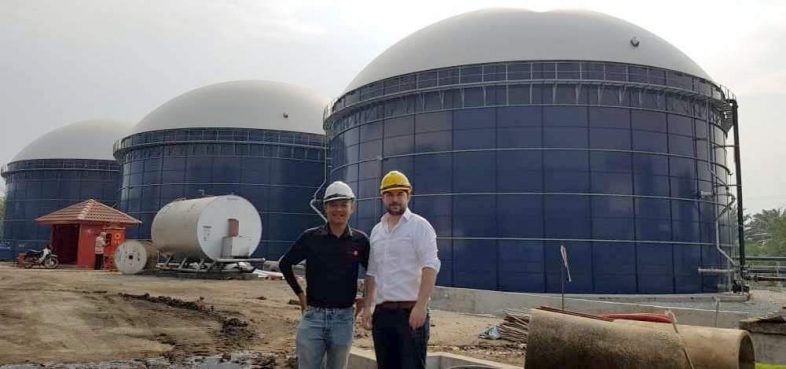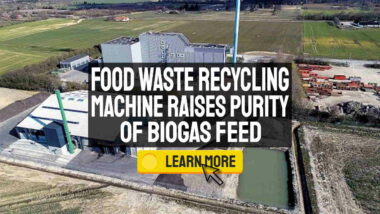We report on how Biogas Digester Mixing for palm oil mill effluent (POME) fed continuous stirred tank reactor (CSTR) Biogas Plants in Asia are being equipped with highly acclaimed Landia GasMix mixers. It is clear, as explained in the Press Release below, that the importance of AD plant mixing is now gaining recognition in Asia.
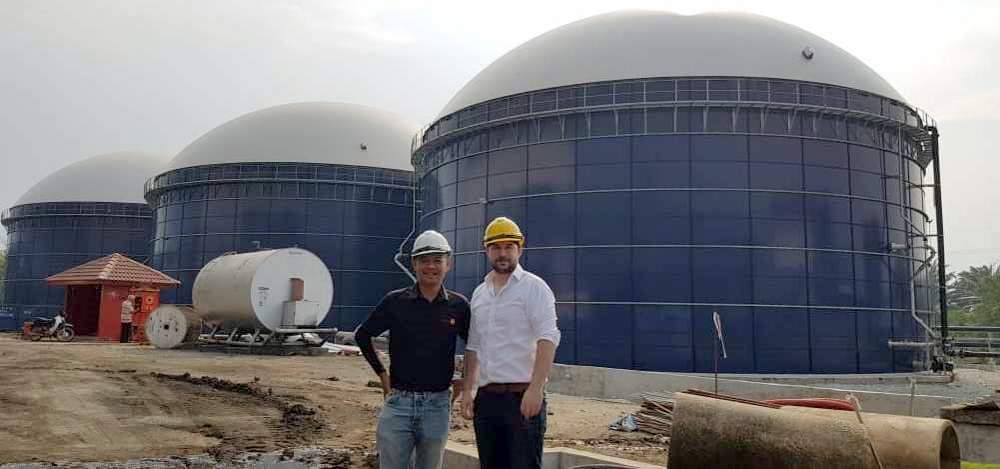
The POME biogas digester example shown here is a continuously stirred tank reactor that is used for the anaerobic digestion of palm oil mill effluent. This is the most popular type of AD process used in Asia for large biogas plants.
The reactor tanks are usually made up of steel or concrete and have a capacity range from approximately 1,000 to 7,000 m3.
Biogas digesters are also known as anaerobic digesters, ADs, or POME biogas digesters. They are used to produce methane gas from organic waste such as animal manure, food scraps, and sewage sludge. Biogas can be burned in engines to generate electricity and heat, or it can be compressed and stored in gas cylinders for use as fuel.
Biogas Digester Mixing plays an important role in this process because it ensures that the biogas production process runs smoothly and at a consistently high yield.
Modern digester designs are capable of high biogas yields and maintaining a stable output. But, only if complete mixing is provided. Despite the name of this (the most common, biogas digester plant type), mixing need not be always-on. The key is to ensure that the whole reactor body is homogeneous and the feedstock is consistently placed in close contact with the process micro-organisms.
CSTRs, or Complete Mix digesters can produce biogas from a variety of organic wastes and are operated at a total solid content in the range of 3 to 10%.
These plants are immediately recognizable, as shown in the illustrations on this page. They can be seen from hundreds of metres away with their characteristically domed flexible plastic impermeable material covers. These cover the top of each of these digester vessels. Beneath the domes, the biogas is stored until it is needed.
ADBA Press Release (Archive):
POME Dome success for Landia’s biogas digester mixing system in Malaysia

As a growing number of countries move away from lagoon-based systems for the treatment of palm oil mill effluent (POME), Landia has gained an important new order to supply nine of its acclaimed GasMix digester mixing systems for the generation of green energy in Malaysia.
Situated less than an hour from Kuala Lumpur International Airport, the digesters at Seri Ulu Langat Palm Oil Mill now benefit from externally-mounted GasMix systems that are low on maintenance, with no moving parts inside the tanks.
Working in close conjunction with civil works and tank supply specialists YMC, Landia has also supplied the complete pipework package for the three Epoxy Coated 28m (diameter) by 12m (high) digesters (each 7500 m3).
Speaking for the plant operator Dolphin Biogas Sdn. Bhd., Mr. Teoh Kah Lean said:
“There were much cheaper options than Landia, but when switching on the GasMix mixing system, we have never seen a biogas dome inflate so quickly”.
He added:
“We are proud of our new above-ground biogas plants, which are much better for the environment. Landia has helped us achieve our goals every step of the way, with first-class knowledge and communication. Processing POME through an AD process with a project-specific, highly efficient mixing system is a big step in the right direction. Even though there are cheaper alternatives we will not be looking to change anything in our design for future projects”.
Landia chopper pumps draw thick liquid from the bottom of the tank, where all solids are further chopped to accelerate the digestion process and prevent clogging of pipes and nozzles.
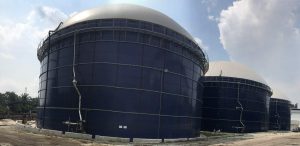
The liquid is injected into the upper half of the tank, while biogas is aspirated from the top of the tank and mixed into the liquid through the same ejector/diffuser.
Then, in the second stage of the mixing process, the settled liquid sludge is recirculated through the bottom mixer and is injected into the lower half of the tank.
This creates powerful, comprehensive mixing of the tank’s contents and stops any sedimentation build-up. The system in Malaysia is low on energy, operating for just 40 minutes in every 2-hour period.
The latest GasMix order for Landia follows successful installations in China, Australia, and Thailand, as well as numerous projects throughout Europe, South East Asia, and the US.
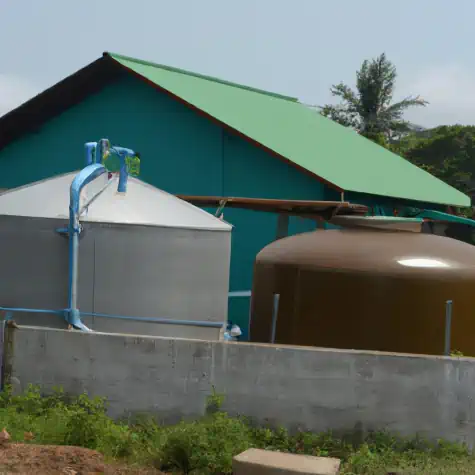
POME biogas is a renewable energy source that can be generated from biomass. It is a type of gas that is produced from the decomposition of organic matter in an oxygen-free environment.
This biogas has been used since the 1990s and it has been used in many countries around the world, such as Malaysia and Thailand.
The process of POME biogas generation begins with the cutting and shredding of palm leaves and general POME waste biomass, into small pieces. This aids the digestion process.
POME biogas is a clean fuel. It is also a sustainable renewable energy source that can be used for cooking, lighting, and other purposes. The acronym stands for palm oil mill effluent which is the liquid waste from palm oil mills.
The earliest pome biogas plants in Malaysia were built as long ago as 2009 and the great majority of them have been operating well since then.
The POME process was developed in the 1980s and 1990s at the Technical University of Aachen, Germany. Anaerobic digestion produces methane production from the fermented material.
[Article first uploaded on 17 June 2019. Revised November 2022.]



